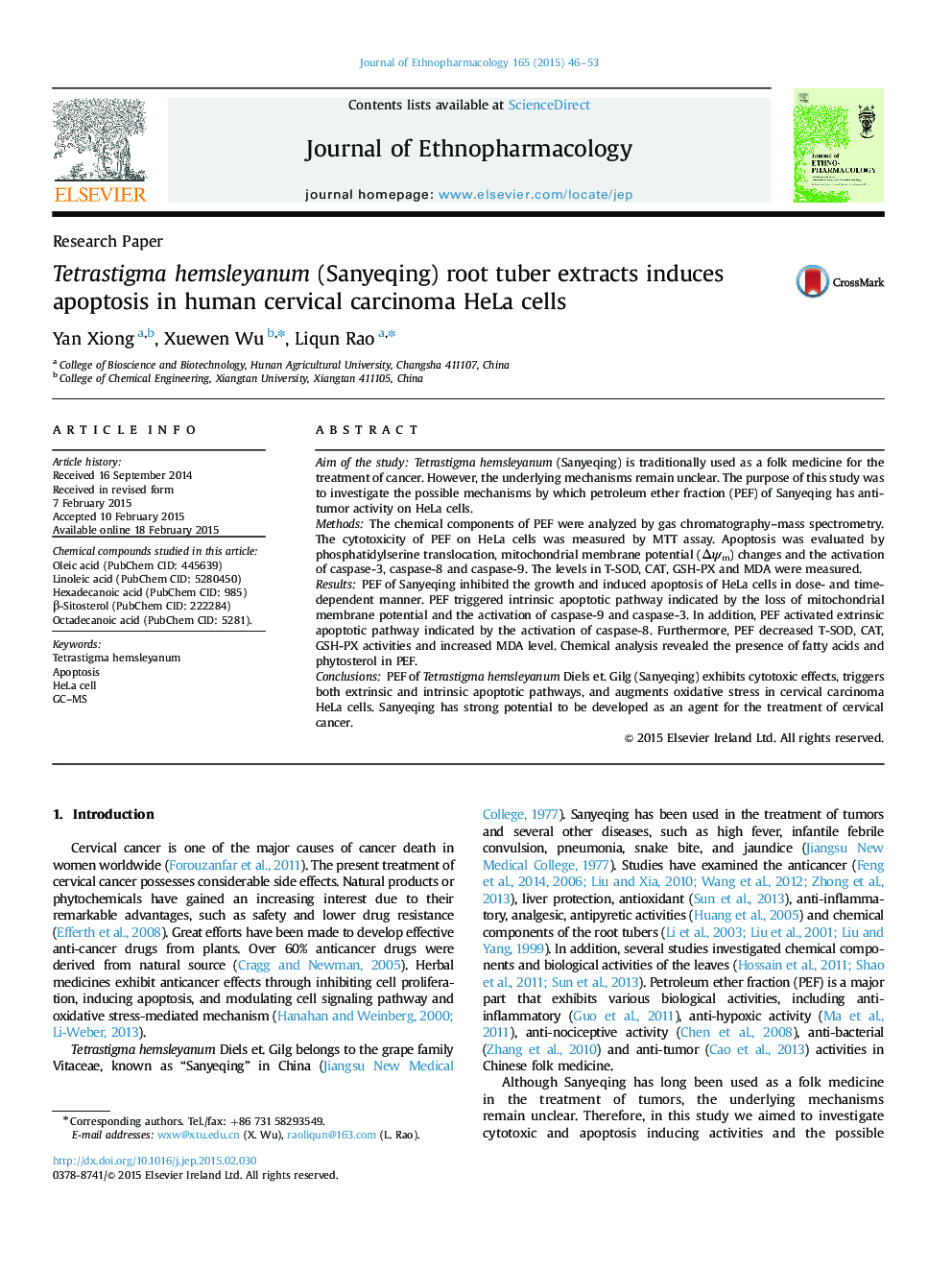| Article ID | Journal | Published Year | Pages | File Type |
|---|---|---|---|---|
| 2545055 | Journal of Ethnopharmacology | 2015 | 8 Pages |
Aim of the studyTetrastigma hemsleyanum (Sanyeqing) is traditionally used as a folk medicine for the treatment of cancer. However, the underlying mechanisms remain unclear. The purpose of this study was to investigate the possible mechanisms by which petroleum ether fraction (PEF) of Sanyeqing has anti-tumor activity on HeLa cells.MethodsThe chemical components of PEF were analyzed by gas chromatography–mass spectrometry. The cytotoxicity of PEF on HeLa cells was measured by MTT assay. Apoptosis was evaluated by phosphatidylserine translocation, mitochondrial membrane potential (Δψm) changes and the activation of caspase-3, caspase-8 and caspase-9. The levels in T-SOD, CAT, GSH-PX and MDA were measured.ResultsPEF of Sanyeqing inhibited the growth and induced apoptosis of HeLa cells in dose- and time-dependent manner. PEF triggered intrinsic apoptotic pathway indicated by the loss of mitochondrial membrane potential and the activation of caspase-9 and caspase-3. In addition, PEF activated extrinsic apoptotic pathway indicated by the activation of caspase-8. Furthermore, PEF decreased T-SOD, CAT, GSH-PX activities and increased MDA level. Chemical analysis revealed the presence of fatty acids and phytosterol in PEF.ConclusionsPEF of Tetrastigma hemsleyanum Diels et. Gilg (Sanyeqing) exhibits cytotoxic effects, triggers both extrinsic and intrinsic apoptotic pathways, and augments oxidative stress in cervical carcinoma HeLa cells. Sanyeqing has strong potential to be developed as an agent for the treatment of cervical cancer.
Graphical abstractFigure optionsDownload full-size imageDownload high-quality image (206 K)Download as PowerPoint slide
